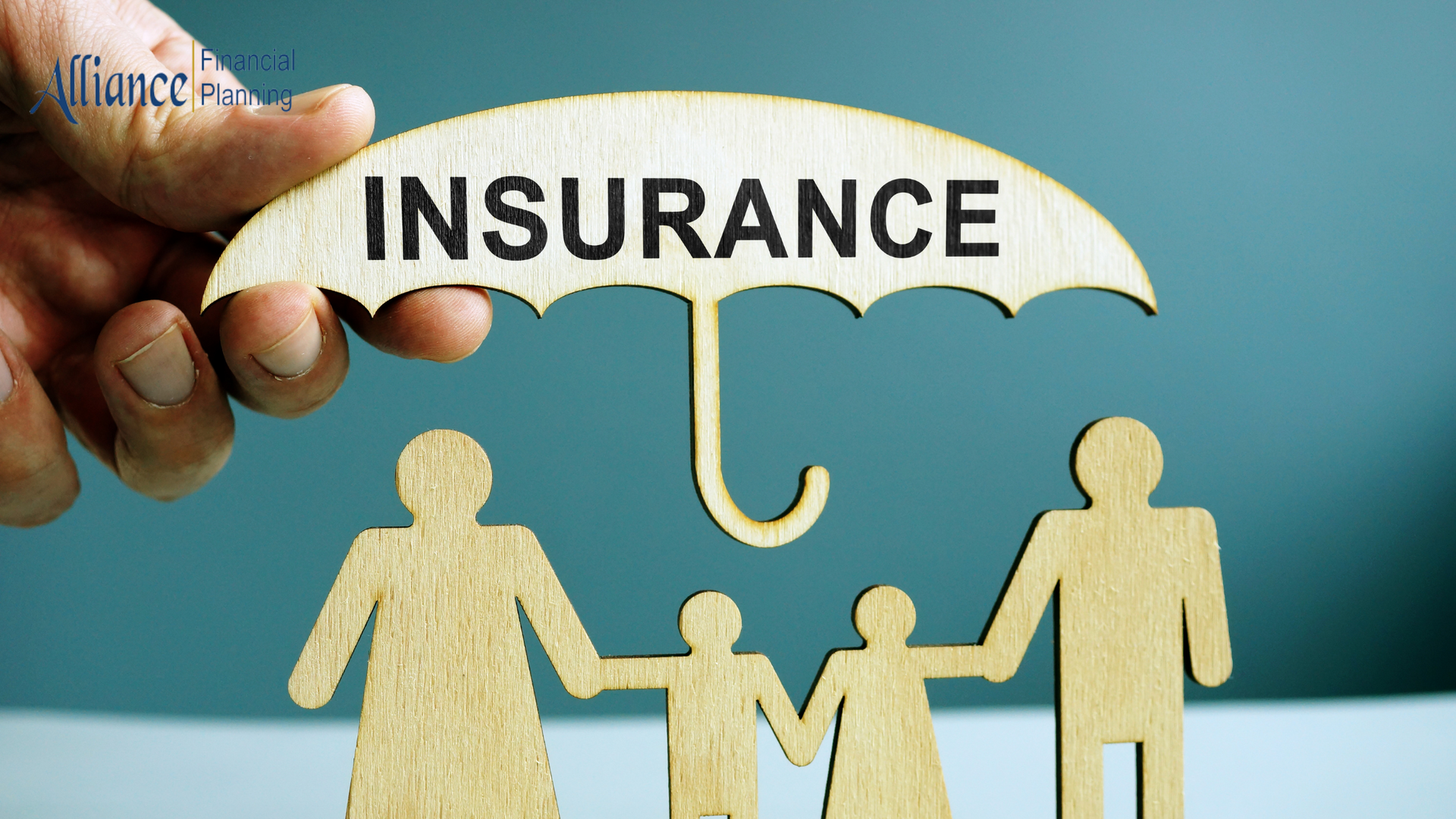Why is Medicaid planning important?
Aging is inevitable, and a gradual (or not so gradual) inability to function independently is a great concern for many people. While the prospect of entering a nursing home is a daunting one, equally frightening is the expense of nursing home care. Although purchasing long-term care insurance might be the most logical move, not everyone can afford the cost of its premiums. Many people feel that their only option is to spend down their life savings in order to private-pay nursing home care. Once this money has been exhausted, they'll apply for Medicaid. But this isn't the way it has to be. To qualify for Medicaid, both your income and the value of your assets must fall below certain limits, which vary from state to state. In determining your eligibility for Medicaid, a state may count only the income and assets that are legally available to you for paying your bills. Consequently, a number of tools have arisen to facilitate Medicaid qualification.
Note that Medicaid eligibility rules are subject to change. Seniors and their families should consult a knowledgeable elder law attorney who is familiar with the Medicaid laws in their state.
What are the goals of Medicaid planning?
Medicaid planning serves to accomplish a number of goals: (1) qualifying for Medicaid, (2) exchanging "countable" assets for exempt assets, (3) preserving assets (including the family home) for loved ones, and (4) protecting the healthy spouse (if any).
Qualifying for Medicaid
Qualifying for Medicaid is not automatic; your income and asset levels must fall below the threshold set by your state. However, a state may consider only the income and assets that are legally available to you for paying your bills. Medicaid planning may help you to qualify for Medicaid.
Exchanging countable assets for exempt assets
The term countable assets refers to anything valuable you own that is not exempt by law or otherwise made inaccessible; the total value of your countable assets (together with your nonexempt income) will determine your eligibility for Medicaid. Under federal guidelines, each state composes a list of exempt assets. It is possible, therefore, to rearrange your finances so that countable assets are exchanged for exempt assets (or otherwise made inaccessible to the state).
Preserving assets (including the family home) for loved ones
Why are so many people averse to simply liquidating their assets to pay for nursing home care? After all, Medicaid will eventually step in (in most states), once you've exhausted your personal resources. The reason is simple: People want to financially assist their loved ones. After working long hours for many years, over the course of a lifetime, most people don't want to see their nest eggs vanish; rather, they want to be able to pass something down to their loved ones. And this can be particularly true with respect to the family home, which is often the single largest asset a nursing home resident might own.
Protecting the healthy spouse (if any)
With respect to a married couple, financial protection of the healthy or at-home spouse is always an important concern. A married couple's assets are pooled together when the state is considering the eligibility of one spouse for Medicaid. The healthy spouse is entitled to keep a spousal resource allowance, which generally amounts to one-half of the assets (not to exceed $148,620 in 2023). This really isn't much money, especially if the healthy spouse is much younger. Medicaid planning seeks to financially assist the healthy spouse.
What are the primary tools and strategies for attaining these goals?
Purchase of exempt assets
It has become standard practice for a Medicaid applicant to use countable resources to purchase exempt assets. Exempt assets are those that do not affect your eligibility for Medicaid; each state composes a list of exempt assets, based on federal guidelines. Typically, this list may include such items as a family home, prepaid burial plots and contracts, one automobile, and term life insurance. Limits may vary.
Instead of spending your money solely on nursing home bills, therefore, you can pay off the mortgage on your family home, make home improvements and repairs, pay off your debts, purchase a car for your healthy spouse, and prepay burial expenses.
Caution: In 2023, a family home with equity above $688,000 (or $1,033,000 if increased by your state) makes you ineligible for Medicaid. An exception applies if your spouse, child under age 21, or child who is blind or disabled resides in the home. States may not enforce a maximum equity limit.
Using immediate annuities to convert countable assets into an income stream
A healthy spouse may want to take jointly owned, countable assets to purchase a single premium immediate annuity that is Medicaid-compliant for the benefit of himself or herself alone. You convert countable assets into an income stream. This is beneficial, since each spouse is entitled to keep all of his or her own income. (This stands in contrast to the treatment of assets, whereby all assets of a married couple are pooled together and totaled.) By purchasing an immediate annuity in this manner, the institutionalized spouse can qualify more easily for Medicaid, and the healthy spouse can enjoy a higher standard of living.
Caution: Generally, for annuities purchased on or after February 8, 2006 (this date may be slightly different in your state), the annuity will be counted as an asset unless the state is named as the primary beneficiary (unless the beneficiary is your spouse or minor or disabled child), in which case the state must be named as the secondary beneficiary. There is an exception for annuities held within a retirement plan. Further, any interest you have in an annuity must be disclosed at the time you apply for Medicaid.
Transfer of assets under "reverse half-a-loaf"
Prior to the enactment of the Deficit Reduction Act of 2005 (the Act), the "half-a-loaf" strategy was often used to preserve assets and facilitate eligibility for Medicaid. Basically, you would give approximately one-half of your assets away (to loved ones) in order to preserve those assets; you used the remaining money to pay for your nursing home care during the period of ineligibility for Medicaid caused by the transfer. This strategy worked because the period of ineligibility was triggered when the transfer was made. Under the Act, the period of ineligibility now starts when you apply for benefits, effectively eliminating the half-a-loaf strategy in most cases.
But since the enactment of the Deficit Reduction Act, a strategy referred to as "reverse half-a-loaf" is being used. With a reverse half-a-loaf, you transfer assets to loved ones in an amount that will qualify you for Medicaid in the same month that you apply for benefits. Due to this transfer, a period of ineligibility will apply. You then purchase an annuity or a promissary note that will "cure the transfer" by having a portion of the transfer returned, which shortens the eligibility period.
Caution: The reverse half-a-loaf strategy is not permitted in all states. It will not work in states that do not allow partial cures. An attorney or advisor who is experienced with Medicaid planning can give you more information about the rules in your state.
Trusts
An irrevocable trust can help you to qualify for Medicaid and preserve assets for your loved ones; it serves to shelter your assets (and/or income), making them unavailable to you. The state Medicaid authorities cannot consider assets that are truly inaccessible to the Medicaid applicant; therefore, anything that stays in an irrevocable trust will lie outside of your financial picture, for Medicaid eligibility purposes.
Although a number of trusts have been devised by Medicaid planning attorneys, four have received particular note and the most widespread acceptance: (1) irrevocable income-only trusts, (2) irrevocable trusts (in which the creator of the trust is not a beneficiary), (3) Miller trusts, and (4) special needs trusts.
Preservation of principal residence through outright transfers, life estates, special powers of appointment, and transfers into trust
For many people, a house is generally the most valuable and important asset they own. Not only does it have sentimental value, but it is sometimes the only means of passing down some financial security to children or other loved ones. However, the skyrocketing cost of nursing home bills can jeopardize your ability to preserve your house. Additionally, a state may be entitled to seek reimbursement for Medicaid payments by, in some cases, placing a lien on your principal residence.
However, utilizing certain Medicaid planning techniques may help you preserve your home for your loved ones:
- Outright transfers (gift of the home)--Making a gift of your home to your children protects this asset for them; the state cannot place a lien (or force a sale) on a home that no longer belongs to you and is not part of your estate.
- Transfer subject to life estate--With this planning tool, you transfer the remainder interest in your house to your loved ones, and you keep a life estate for yourself. You have the legal right to live in the house, and when you die, your loved ones will own the home automatically.
- Transfer subject to special power of appointment--Here, you transfer your house to someone else but reserve the right to later redirect the ownership of the house to a different person. Since the house no longer belongs to you, the state cannot place a lien (or force a sale) on it. And this tool provides you with tax advantages as well.
- Transfer in trust--From a Medicaid perspective, the most effective form of trust for protecting your principal residence would be the irrevocable income-only trust. It can facilitate your Medicaid eligibility and remove the house from your probate estate, protecting it from a Medicaid-forced sale in some states.
Durable power of attorney
Your possible incapacity in the future should be a concern. If you become mentally incompetent before you enter a nursing home, it may be very difficult (if not impossible) to effect a transfer of your assets. A durable power of attorney is a written instrument you sign, authorizing someone else to act for you in the event that you become incapacitated. That way, for example, a wife can transfer the family home out of her husband's name and into her own even after her husband becomes too ill to manage his own affairs.
How does long-term care insurance factor in?
Because Medicare and other forms of health insurance do not pay for custodial care (assistance with daily activities), many nursing home residents have only three alternatives for paying their nursing home bills: cash, Medicaid, and long-term care insurance (LTCI). By purchasing LTCI while you are still healthy, you can hold onto the bulk of your assets for as long as possible--there is no need for you to divest yourself of assets through trusts and other planning tools years ahead of time. Since your insurance will subsidize your nursing home bills during your first few years, you can transfer assets to your loved ones after you enter a nursing home. Any Medicaid ineligibility period created by your transfer of assets will be harmless; your insurance company will pay your bills during that time period.
On the downside, the insurance premiums might be too expensive for a person of modest means. You must consider not only whether you can afford the premiums now but also whether you'll be able to continue paying the premiums in the future (when your income might be substantially decreased).
Tip: Most states participate in the Long-Term Care Partnership Program. The Partnership Program combines private LTC insurance with Medicaid. Those who purchase LTC insurance through the program receive certain benefits such as the ability to protect some or all of their assets from the "spend down" requirements of the eligibility process.
What are the drawbacks to Medicaid planning?
Medicaid planning can involve certain risks and drawbacks. In particular, you need to be aware of "look-back" periods and possible disqualification for Medicaid, and adverse tax consequences. Because the Medicaid transfer rules have been tightened in recent years (and may continue to contract in the years ahead), you should consult with an attorney experienced with Medicaid planning.
Look-back period
When you apply for Medicaid, the state has the right to review or look back at your finances (and those of your spouse) for a period of months before the date you applied for assistance. For transfers made on or after February 8, 2006 (the date of enactment of the Deficit Reduction Act of 2005), the look-back period is 60 months.
Certain transfers of countable assets for less than fair market value, made during the look-back period, will result in a waiting period or period of ineligibility before you can start to collect Medicaid benefits. The formula for determining the waiting period may be explained as the fair market value of the transferred assets divided by what Medicaid determines to be the average monthly cost of nursing homes in your locale, the quotient representing the number of months for which you will be ineligible for certain Medicaid benefits.
Example(s): Assume that Ralph used $288,000 to create an irrevocable trust, naming himself as beneficiary and his friend as trustee. Ralph entered a nursing home two years later at the rate of $6,000 per month (which is the average in his locale) and applied for Medicaid. But because Ralph transferred assets to an irrevocable trust during the look-back period (60 months), he will be ineligible to receive Medicaid benefits for 48 months ($288,000 divided by $6,000 equals 48 months).
It is possible, therefore, that engaging in Medicaid planning can actually cause you to become ineligible for Medicaid for a time.
Adverse tax consequences
If you give away your assets during your lifetime, the recipients (beneficiaries) will step into your shoes in a tax sense--they'll get the same tax basis in the assets that you had possessed. That can be a drawback, since your holding onto the assets until death would provide the recipients with a stepped-up basis; that is, the fair market value of the assets on your date of death would become the tax basis for your beneficiaries. Nevertheless, certain Medicaid planning tools can preserve the stepped-up basis, even when you effect lifetime transfers. It is important, therefore, to evaluate your Medicaid planning strategies from all perspectives, including a tax viewpoint. What may be the most wise decision from a Medicaid standpoint might be a poor move from a tax standpoint. (Tools that won't prevent the ultimate recipients of your assets from getting a stepped-up tax basis upon your death include transfer subject to life estate, transfer subject to special power of appointment, and transfer in trust.) For more information, consult a financial professional or an elder law attorney experienced with Medicaid planning.
This article was prepared by Broadridge.
LPL Tracking #1-05037270







- Mon - Fri
- -
- Sat - Sun
- Closed



